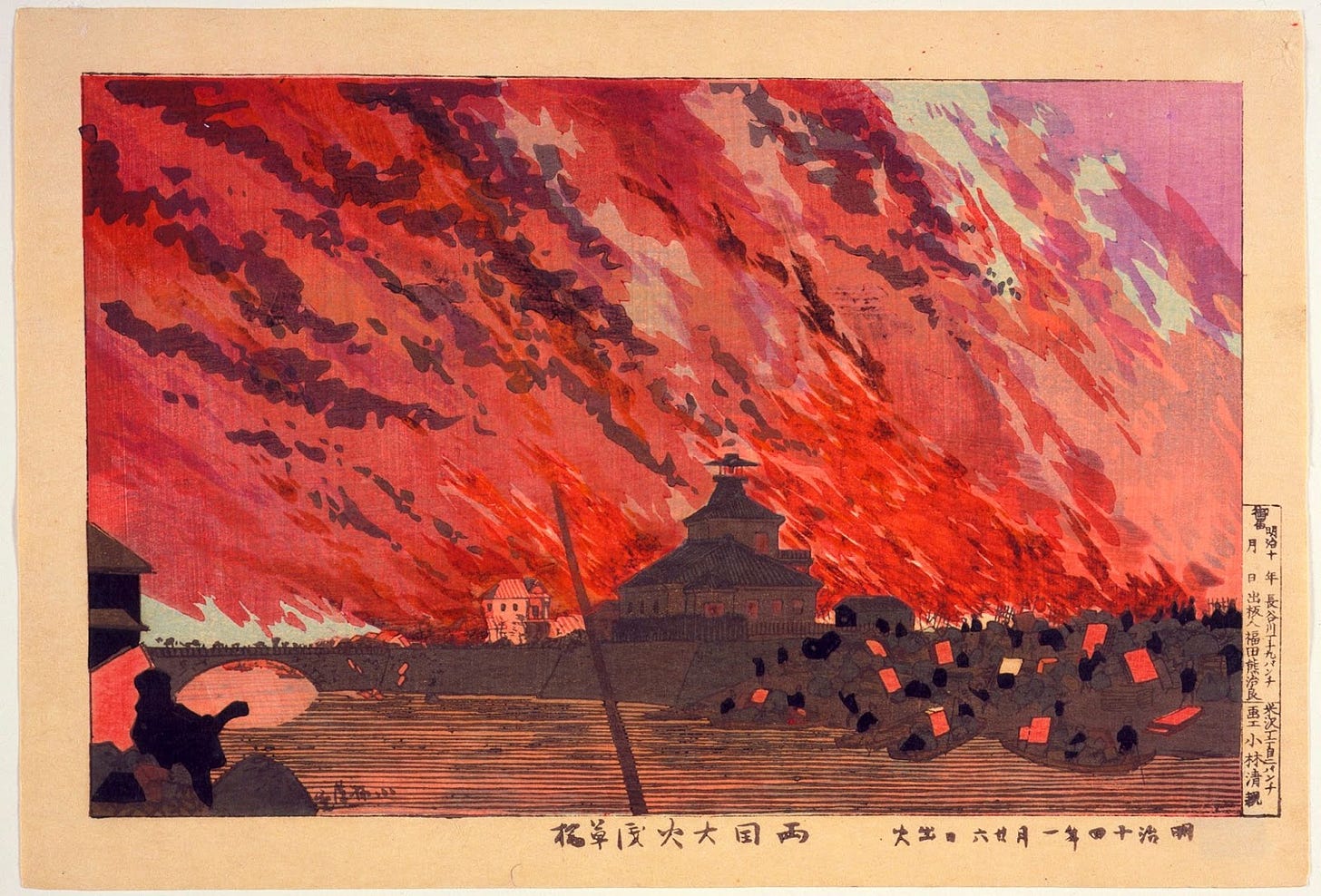Why the Japanese Capital Burned Down All the Time
"Fires and fights are the flowers of Edo."
Edo (now Tokyo) burned brightly and often, thanks to a bunch of reasons, some geographical, some architectural, and some Pokémonal. A popular saying went:
“Fires and fights are the flowers of Edo”
火事と喧嘩は江戸の華
If you were looking for Charmander or Chun-Li, Edo was the place to be.
In 1603, the warlord Tokugawa Ieyasu made Edo Japan’s capital. The population exploded, and by the end of the 1600s Edo was the largest city in the world. In 1721, during the first official census of Japan, Edo had over one million people. The largest city in Europe at the time, London, had a measly 650,000, barely enough to fill an Edo tea party.
Houses in Edo were built of wood, paper, and thatch. Streets were narrow, and open public spaces were small and few. Edo’s growth ensured open squares were quickly laughed at and built in. So once a fire started—perhaps a Charmander had a particularly bad dream—it would easily spread from house to house.
Edo is located on the Southern end of the Kantō plain, a large, flat place with nothing blocking the Northwestern winds that liked to go crazy in winter and spring. Winters are dry and cold, perfect for turning wooden buildings into firetraps just when people are most likely to use open fires and coal stoves.
Tectonic plates don’t like other plates in their way. Japan sits right where not two, not three, but four plates meet, and their constant pushing and shoving tends to cause earthquakes. Edo was a city of Jenga towers made of kindling, with people living inside them burning fires for light and heat.
Edo’s rapid growth caused extreme poverty, and poverty can cause fires. How? Well, nothing gets people’s attention quite as well as a really big fire. While they’re distracted, you can steal their stuff. Your neighbors will even help you by throwing all their most valuable belongings out of their vulnerable homes into the street!
For centuries, the Japanese way to fight city fires destroying your house was to destroy more houses. They would tear down enough buildings to create a zone around the fire where there was nothing to burn, and let the fire die out.
The earliest water pumps were imported after the Great Meireki Fire of 1657, but they were not nearly powerful enough to save buildings. Instead, they were used to keep firefighters wet while they battled near the flames.
A centralized fire fighting service also didn’t exist until after 1657. Before that, small private firefighting brigades were largely made up of carpenters. Some rather cynical historians have remarked that perhaps these men were not properly incentivized to save the wooden structures they would be paid to rebuild later.
Gradually, changes in fire fighting techniques, construction, city planning, and an increased popularity of Grass-type and Water-type starters led to the safer Tokyo we know today.


